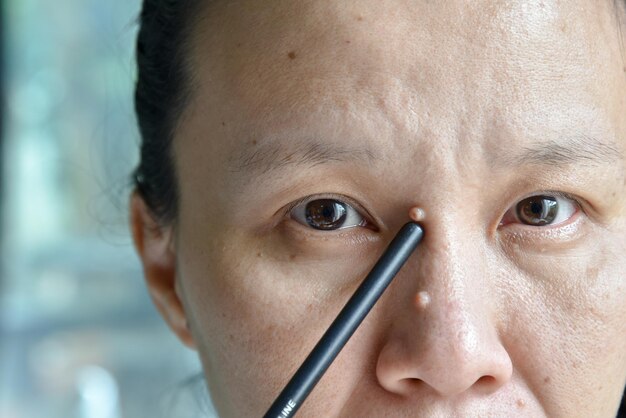
Introduction
When it comes to birthmarks, most people think of skin imperfections that are visible on the body’s surface. However, the human body can sometimes surprise us with its uniqueness. One such question that often arises is, “Can you have a birthmark in your eye?” In this article, we will explore the intriguing world of eye birthmarks, their causes, types, and whether they pose any health concerns.
Understanding Birthmarks
Before delving into the specifics of eye birthmarks, it’s essential to have a basic understanding of what birthmarks are. Birthmarks are anomalies in the skin’s color or texture that are present at birth or appear shortly after. They can vary in size, shape, and color and are generally harmless. Most birthmarks are found on the skin’s surface, but some can occur in less common places, such as the eye.
Eye Birthmarks: A Rare Phenomenon
Eye birthmarks, also known as ocular birthmarks or nevus of the eye, are a rare occurrence. They are characterized by the presence of pigmented or non-pigmented spots or marks on the various parts of the eye, including the iris, sclera, and conjunctiva. These marks can vary in size and shape and may appear as dark spots or lighter discolorations within the eye.
Types of Eye Birthmarks
1. Iris Nevus
One of the most common types of eye birthmarks is the iris nevus. This occurs when there is a cluster of pigmented cells in the iris, leading to a change in eye color in that specific area. While often harmless, any change in eye color should be monitored by an eye care professional.
2. Conjunctival Nevus
Conjunctival nevi are birthmarks that appear on the conjunctiva, the thin, transparent membrane that covers the white part of the eye. They can range from small, benign spots to larger, more prominent lesions. In some cases, conjunctival nevi may require medical evaluation to rule out any potential complications.
3. Scleral Nevus
Scleral nevi are birthmarks that affect the white part of the eye, known as the sclera. They can appear as dark or pigmented spots on the sclera’s surface. While they are typically benign, regular eye check-ups are necessary to ensure no changes in the nevi occur.
4. Choroidal Nevus
Choroidal nevi are birthmarks found within the eye, specifically in the choroid, which is the layer of blood vessels and connective tissue beneath the retina. These nevi are typically asymptomatic but may need monitoring for potential changes that could affect vision.
Causes of Eye Birthmarks
The exact cause of eye birthmarks is not always clear. Some researchers believe they may be related to genetic factors, while others suggest they may be the result of spontaneous mutations during fetal development. Environmental factors may also play a role, although more research is needed to confirm this.
Are Eye Birthmarks Harmful?
In most cases, eye birthmarks are benign and do not pose a significant health risk. However, it’s crucial to monitor any changes in size, shape, or color of these birthmarks and seek medical attention if necessary. While rare, some eye birthmarks can develop into more serious conditions, such as melanoma, a type of eye cancer.
Conclusion
In conclusion, the presence of a birthmark in your eye is a rare but fascinating occurrence. These eye birthmarks come in various types and are generally harmless. However, it’s essential to stay vigilant and consult with an eye care professional if you notice any changes or have concerns about your eye birthmark. Remember that regular eye check-ups can help ensure your eye health.
FAQs
1. Can eye birthmarks be removed?
In most cases, there is no need to remove eye birthmarks as they are harmless. However, if a birthmark poses a risk to your vision or is causing discomfort, your eye care specialist may recommend removal.
2. Are eye birthmarks hereditary?
While the exact cause of eye birthmarks is not always known, there may be a genetic component. If someone in your family has an eye birthmark, you may be more likely to have one as well.
3. Do eye birthmarks change over time?
Some eye birthmarks can change over time, either in size or color. It’s essential to monitor any changes and consult with an eye care professional if you notice significant alterations.
4. Are all eye birthmarks visible?
Not all eye birthmarks are visible to the naked eye. Some may require specialized equipment and examination by an eye care professional to be detected.
5. Can eye birthmarks cause vision problems?
While most eye birthmarks are harmless, some may affect vision if they grow or change position. Regular eye check-ups can help detect and address any potential issues early on.
